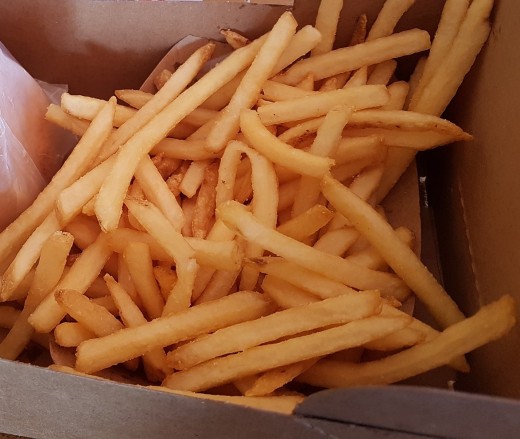Ask Carb Diva: Questions & Answers About Food, Recipes & Cooking, #1

Introduction
I have a dear friend at Hub Pages; you know her as FlourishAnyway, the lady who has a compilation of songs for every thought, emotion, and quirk of mankind. And I mention her because a few days ago I wrote an article on "How to Avoid These Common Cooking Mishaps." Flourish wrote this in the comments section:
"I’m so glad you’ve added these problem-solving issues to your library of articles. (I evidently missed part 1 so I will go back and look for it.). I’ve also often wondered if common cooking questions is a good area for you to consider, much like Bill’s mailbag. You are such a trusted and connected authority that people would feel open to asking the “dumb” or embarrassing cooking and food questions that they don’t know who else to ask."
I've carefully considered her kinds words, and decided I would do just that. I've "unpublished" the original article and am republishing it here. Since, unlike Bill (billybuc), at the moment I have an empty mailbag, I'll prime the pump with the original problems. Let's pretend they came from "anonymous," someone in search of answers but too embarrassed to reveal their true identify.
How to Cook Salmon
I cooked a piece of salmon, and some ugly white stuff seeped out. I scraped it off (hoping my guests wouldn't notice). What is it, and how can you prevent it?

You have a beautiful piece of fresh salmon; you’ve carefully removed any lingering pin bones, seasoned with salt and pepper and a kiss of fresh dill, and the oil in the sauté pan is glistening. All systems are go, but as the fish begins to cook you notice a creamy white “ooze” seeping from the pink flesh of your filet. Why oh why?
I have two comments to offer: (1) it’s not your fault (it happens to everyone), but (2) there is a solution. Even the most expert of chefs encounter this problem. The good news is that it’s a perfectly harmless substance called albumin. No, not egg whites (that’s albumen). This albumin with an “I” is protein. As the muscle fibers of the fish cook, they tighten and squeeze out the albumin which then coagulates on the surface.
David Kramer, a professor of seafood science at the University of Alaska offers this figurative and literal “solution”:
Place your uncooked salmon in a basic brine solution (about 1 tablespoon of salt per cup of water) before cooking. Ten minutes should do the trick.
How to Melt Chocolate
I tried to melt some chocolate to make frosting, and instead of turning into liquid it clumped up into a hard, ugly mass and I had to throw the whole batch away.

Chocolate is at best temperamental; treat it harshly and instead of smooth luxuriousness, you’ll be rewarded with a pot full of grainy, lumpy burnt chocolate. Although the internet is populated with hints for successfully melting chocolate in the microwave, my experience has been that the power level of microwaves is too inconsistent. You can go from great to gross in a matter of moments. The best way to melt chocolate is low and slow following these steps:
- Place chocolate in the top of a double boiler or a metal boil set over a kettle of simmering (not boiling) water
- If the water is boiling, escaping steam could touch the chocolate; trust me, chocolate and water don’t mix.
If, despite your best efforts, you find that your chocolate has seized, there is one thing that might work to fix it. Try whisking in boiling water, one teaspoon at a time.
How to Make Creamy (Not Clumpy) Macaroni and Cheese
My family loves macaroni and cheese. I always by the stuff in the blue box, but thought I'd give them a treat and make mac and cheese from scratch. Instead of a creamy cheese sauce I ended up with solid cheese on the bottom of the pan and a slick of oil on top. Help!
I'm sorry to hear that your had problems with your macaroni and cheese. There are several things that could go wrong when making a cheese sauce. Here are a few suggestions:
- Are you whisking skim (zero-fat) milk into the roux? If so, that could be the problem. Fat is a stabilizer; even 1 percent milk is more stable than non-fat.
- Keep the heat on low. Patience is a virtue (and also helps prevent curdled sauce).
- Sometimes the cheese you use can be too good. Mild or medium cheeses are less likely to be grainy. Save the sharp or extra-sharp cheddar for grating on the top of the casserole. American cheese is processed (which sounds bad) but is an excellent choice if you want to make a very creamy sauce.
- Don't add all of the cheese at once. This will drastically lower the temperature of the roux and is more likely to result in clumps of cheese.
- Don't use pre-shredded cheeses. They are convenient but often are coated with cornstarch to keep the shreds from sticking to each other. That added cornstarch is not a good thing for your creamy sauce.
How to Make Great Beef Stew
My beef stew always looks gray and tastes bland. I'm following the recipe to a T. What am I doing wrong?

Anon, this problem is actually pretty easy to fix. This is an issue of too much togetherness. When beef cooks it releases moisture. Too many pieces of beef releasing their moisture at once results in the meat steaming or boiling in its own juices. Use two pans, or cook in batches.
Your chunks of beef (or pork, or chicken) will develop a nicely browned exterior and the bottom of the pan will (when you are done) have browned pieces sticking to it. Don't simply wash it away; this is what chefs call "fond", and it is worth its weight in GOLD.
Use a bit of water, broth, wine, or juice (depending on what you are using to finish your stew). You won't need much, just 2 or 3 tablespoons. Over medium heat add the liquid and stirring with a wooden spoon scrape up those browned bits. They will melt into the liquid which you can then add to your meat cubes. That melted fond is full of flavor and color.
How to Make Crisp (Not Greasy) Fried Foods
How do you prevent fried foods from being greasy?

We loved fried food. At my State Fair, there is a booth dedicated to deep-fried EVERYTHING (even butter, believe it or not!). One would think that with so much attention and devotion to deep-fried foods, we would have this down to a science.
But we don't.
There are so many ways that deep-fried can fail, and unfortunately, we have all fallen prey to them at one time or another. Let me outline what those failures might be and how to correct them.
- One of the biggest culprits in deep-frying failures is oil that isn’t hot enough. For accurate deep frying, you should invest in a deep-fry thermometer. In a pinch you can use my grandma’s trick—if your oil is ready, a small hunk of bread tossed into the oil will sizzle immediately. If you put your food in and it doesn't immediately begin to sizzle and bubble, pull it out and wait.
- “But,” you say, “The oil was starting to smoke.” You were probably using the wrong type of oil. I am a big proponent of olive oil, but it should never be your oil of choice when deep-frying. It has a low smoke point, meaning that it will begin to burn at low temperatures. Peanut oil is the best oil for frying—Asian cooks use it in smoking hot stir-fries with no problem.
- What if you used peanut oil, at the proper temperature, and your food is still soggy? How much food did you put in the pot? Just because you can fit all of the fries in at one time doesn’t mean that you should. An over-crowded pot will cause the temperature of the oil to plunge. Cook in batches.
Well, that's it for now. I hope a few of you drop me a line. Ask anything. If I don't know the answer, I'll research and then we'll both learn together.
By the way, bonus points for anyone who knows what the phrase "prime the pump" refers to.
© 2017 Linda Lum








